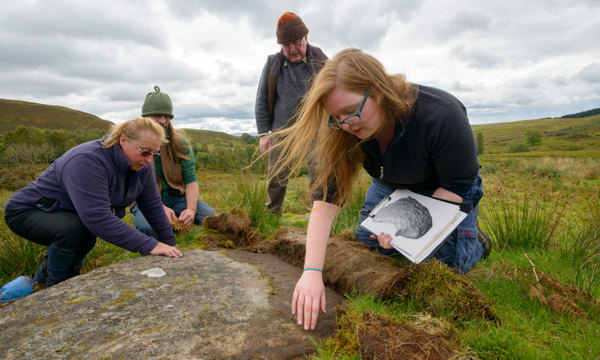1 Valuing local heritage
Our local heritage gives us a sense of connection. It might be to a community, a place, or a shared past. Our heritage reflects different viewpoints across cultures and generations. It is key to our local distinctiveness and identity.
When people talk to us about their local heritage, they tell us that they want it to be recognised and valued. We believe that the best management means involving and empowering communities, in all their diversity. To protect our local buildings and places, we need to understand what makes them special.
Some of the most valuable information about local heritage is held by communities themselves. We work with community groups to explore their heritage, and show them how to find out more about it. We have put together a guide called Talking About Heritage, which has been designed to help you explore, share and celebrate the heritage that is important to you. It offers tips and sources of information that will let you learn more about heritage and what makes it special.
If you'd like more inspiration, you can also check out some of our case studies.
2 Case study: Whithorn Trust, Dumfries and Galloway
The Whithorn Roundhouse is both ancient, and brand new. It's a full-scale reconstruction of the type of roundhouse that existed in the area in the Iron Age - some 2,500 years ago.
It was built to a template based on new archaeological discoveries at Black Loch of Myrton. Normally, roundhouses aren't well preserved in the ground, but the boggy conditions held some of the best preserved evidence ever found for Iron Age woodwork.
The project to reconstruct the roundhouse was complex. The team needed to get various consents and permissions from different organisations, including us. They found support from a wide range of backers, from organisations to local people.
Lots of organisations and groups contributed financially. But it was this combined with in-kind support that made the project work. Local people brought in materials, equipment and huge amounts of interest and good will. Local schools and groups were included in learning and engagement in all the stages of the project. The team used all talent available, from local craftsmen and volunteers to farmers and professional builders.
The roundhouse is an exciting new addition to the experience at Whithorn Trust's Visitor Centre. Giving people a chance to get hands-on with the past has attracted a wider range of visitors, and significantly more family groups now come and explore the heritage of the area.
In 2018, this exciting project won its category at the Heritage Angel Awards.
3 Case study: St John's Tower, Ayr
St John's Tower in Ayr was built more than 600 years ago. It has been host to some of the most powerful men in Scottish History, from Robert the Bruce to John Knox. It is listed at category B, and you can read its list description on our data website.
In 2001, local residents formed the Friends of St John's Tower group to take this landmark of Ayr under their wing. Public access to the tower is limited, so the local community was keen to improve public awareness of the monument.
They produced a short film showing its interior and roof views. People can now discover the tower on the web, access it in new ways and understand its significant role in Ayr.
Building on the skills they gained through their film project with Scotland's Urban Past, the Friends of St John's Tower went on to create a second short film on Doors Open Day 2015. The film was produced by Iain Sands, a student at the University of the West of Scotland.
4 Case study: Granton Castle Walled Garden, Edinburgh
Granton Castle walled garden is the last surviving part of Granton Castle Estate - the castle itself was demolished in 1921. The garden had survived in a surprisingly unchanged state from when it was in use in the 1700s. It is a category B listed building, and our online record for it gives a great deal of information on the history of the site.
However, in 2014, it was facing possible demolition. The local community gathered together to protect the site and its associated history, setting up the Friends of Granton Castle Walled Garden. They have been campaigning to raise awareness of this 'secret' garden in the north of Edinburgh ever since.
The Friends group contacted us in 2015 for help in surveying and recording this medieval walled garden of the now-demolished Granton Castle. Our Scotland's Urban Past team provided training sessions in using archives, reading the urban landscape, and maps.
The group's project improved awareness amongst local residents of how untouched the garden has remained for over 500 years - despite dramatic change in the surrounding area.

